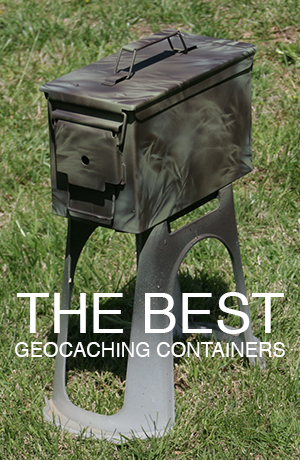 So you’ve been Geocaching for a while now, you’ve found your share of tricky and clever geocaches and you feel that you’re ready to try your hand at hiding your first cache. One of the most important decisions you’re going to make is choosing the right kind of container for your hide.
So you’ve been Geocaching for a while now, you’ve found your share of tricky and clever geocaches and you feel that you’re ready to try your hand at hiding your first cache. One of the most important decisions you’re going to make is choosing the right kind of container for your hide.
Containers come in all shapes, sizes, materials and levels of quality. What things should you look for when choosing your container? No worries, below I’ve listed several aspects which I consider to be “must have” attributes to any good geocaching container. Read on, intrepid adventurer!
Size
The location you’ve chosen can sometimes determine, or at least suggest an appropriate container size. For instance, although some geocachers have done this, a tiny micro container hidden in a vast wooded area may not be the best selection. Unless you’re intentionally trying to frustrate the finder by hiding a “needle in a haystack” type cache, you’re going to want to select a container that’s small, medium, or even large for these spaces. Deeps woods that don’t have a lot of traffic are the perfect places for nice large containers that tuck nicely under a bush or in a hollow fallen log. On the other side of the size scale, a smaller or micro container (think the size of a film canister) might be just the ticket for a more discreet, urban setting. Although there won’t be much space for trade items, you can usually squeeze in a logbook or rolled piece of paper for the finders to sign. Larger containers in an urban setting are not only more difficult to hide, but may draw unwanted attention their way if “muggles” (non-geocacher) spot them while you are retrieving or replacing the cache.
Materials
There’s a limited amount of materials that you can choose from. For the most part, most containers that I’ve seen are typically metal or plastic. Rarely have I encountered glass, and even scarcer are wood containers. I’ve seen lots of camouflage techniques that use wood as part of their scheme, but I haven’t seen many actual containers that are made of wood. I suppose it would be possible if the wooden container were well protected from the elements (i.e. maybe hidden in shed or larger container that protected it from the elements). One reason you might choose a plastic or glass container is because of the transparent / translucent nature of the material and here’s why: An all too often occurrence is having the caching container mistaken for a bomb. Typically, a “muggle” spots a cacher replacing a cache container in it’s hiding spot. Suspicious, the muggle calls the police who might make the determination to activate the local bomb squad. Areas are roped off, traffic might be stopped. You get the picture. Not the best impression being made of Geocaching. In order to avoid this, many people have suggested labeling any container, with stickers or markings, as a Geocache and using a container that is transparent or at least translucent. Police, bomb squads or maybe even a muggle inspecting the container might be less likely to panic if they see a Geocaching sticker and the used happy meal toys inside.
Weather proofing
One of the most common mistakes made by a newbie hider is the lack of weather proofing a container provides. Let me be perfectly clear about this: Mother Nature is the harshest, unrelenting foe your container will ever face. Containers that would last for decades inside a house or garage can be destroyed in one season by conditions in the wild outdoors. Very few containers are designed to withstand exposure day after day and month after month in these conditions. UV rays can turn, what seems to be durable plastic into a brittle, cracked mess all on their own. Newbie hiders mistakenly use “tupperware” type containers only to find them cracked and brittle a year or two later. Even worse are the intentionally degradable “gladware” disposable containers. These rarely survive more than a few months in the wild. Extreme heat or cold (read freezing here) can warp or split containers at times. In order to avoid the challenges of plastics, I’ve seen many cachers resort to metal containers. They either purchased or repurposed metal “tins” (i.e. cookie tins) as an option. Depending on the type of metal, some fare better against rust and corrosion than others. I’ve run into metal containers that are so rusted shut, I had to employ one of my favorite geocaching tools to get it open. Lastly choose a container that has good weather sealing or waterproofing. After hunting down a cache, one of the most disappointing things is to open it up just to find that it’s soaked in water.
Durability
Along the same lines as weatherproofing is durability. Think about how many people are going to find, open and close your container again and again. Unintentional damage by cache finders can happen if the container isn’t durable and sturdy. Containers can also be subject to the attacks and explorations of critters as well. Everything from ants to raccoons might find your container just interesting enough to try and get inside. Sometimes a newbie finder might put food or candy as a trade item which is all it takes to lure in a hungry varmint ready to chew through your container.
Now that you know what to look for, go out and choose the container that best fits your hide and get your geocache published for the world to find!

No comments yet.